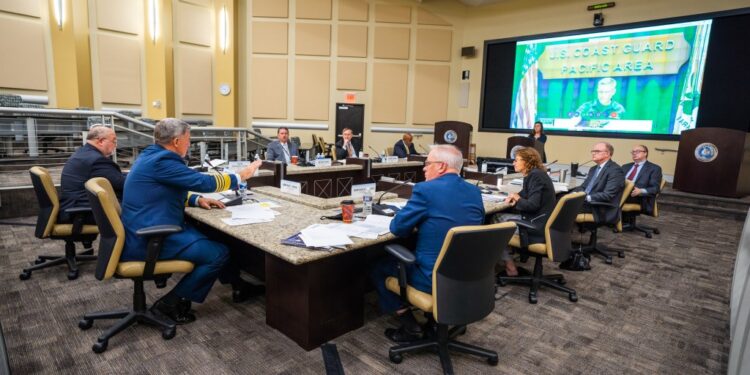One of the challenges officials faced during Deepwater Horizon was a lack of awareness and understanding among federal, state, and local agencies of how the US government responds to a Stafford Act/National Response Framework incident differently than how it responds to a NCP incident, speakers during a USCG meeting agreed.
The 2020 Spill of National Significance Executive Seminar gathered federal executives to familiarize agency principals with national oil spill response policies and explore interagency coordination procedures during a SONS (Spill of National Significance).
According to the National Oil and Hazardous Substances Pollution Contingency Plan (NCP), a SONS is “a spill that due to its severity, size, location, actual or potential impact on the public health and welfare or the environment, or the necessary response effort, is so complex that it requires extraordinary coordination of federal, state, local, and responsible party resources to contain and clean up the discharge.”
During a SONS, interagency coordination and involvement of senior officials is key to assuring Congress and the public that the federal government is taking all appropriate action to mitigate the adverse impacts to public health, the environment, and the economy.
Meanwhile, in a Stafford Act response, the affected state(s) takes the lead and requests support from the federal government. FEMA coordinates support to the state, using the National Response Framework. This process is most familiar to states and they expect it during a response; it is how they receive federal aid during hurricanes and other natural disasters.
Conversely, under a NCP response, the federal government – either the Coast Guard or EPA – is pre-designated as the Federal On-Scene Coordinator and the premise that the “polluter pays” reigns. Because of this, the Responsible Party has a significant role in the decision-making process, is a key member of the Unified Command, and is ultimately held responsible.
Therefore, each of them trigger a different but complex series of frameworks, laws, regulations, funding mechanisms, and directives that guide the response.
We’re never going to have a large-scale crisis in this country again that isn’t interfaced with the political world and operational world. And trying to keep those processes distinct, so you can focus on fixing the problem, and letting political leaders do their jobs, in being responsive to their constituents, requires an inordinate amount of insight and ability to work in two worlds, without compromising what you’re trying to do,
…said Guest speaker, retired Admiral Thad Allen, former Commandant of the Coast Guard and Federal On-Scene Coordinator for the Deepwater Horizon response.
Allen recounted the early days of the Deepwater Horizon response when circumstances made it clear that the event was catastrophic and would impose extraordinary requirements in order to contain and clean up the spill.
Not only was the size of the response unprecedented, knowledge of national response doctrine was limited, as was how to deal with a spill that was 45 miles offshore and fell outside state jurisdictions.
Allen said that the magnitude of the response required a unified voice and coordinated effort between federal, state and local leaders. Never before had the nation faced such a significant response.
Eventually, the response was able to rely on frameworks, plans and protocols already in place to guide decision making, such as the Oil Pollution Act of 1990 (OPA 90) and dispersant preapprovals. Also important was the activation of the National Response Team and NIC whereby the Secretary of Homeland Security assumed the role of the Principal Federal Official.































































